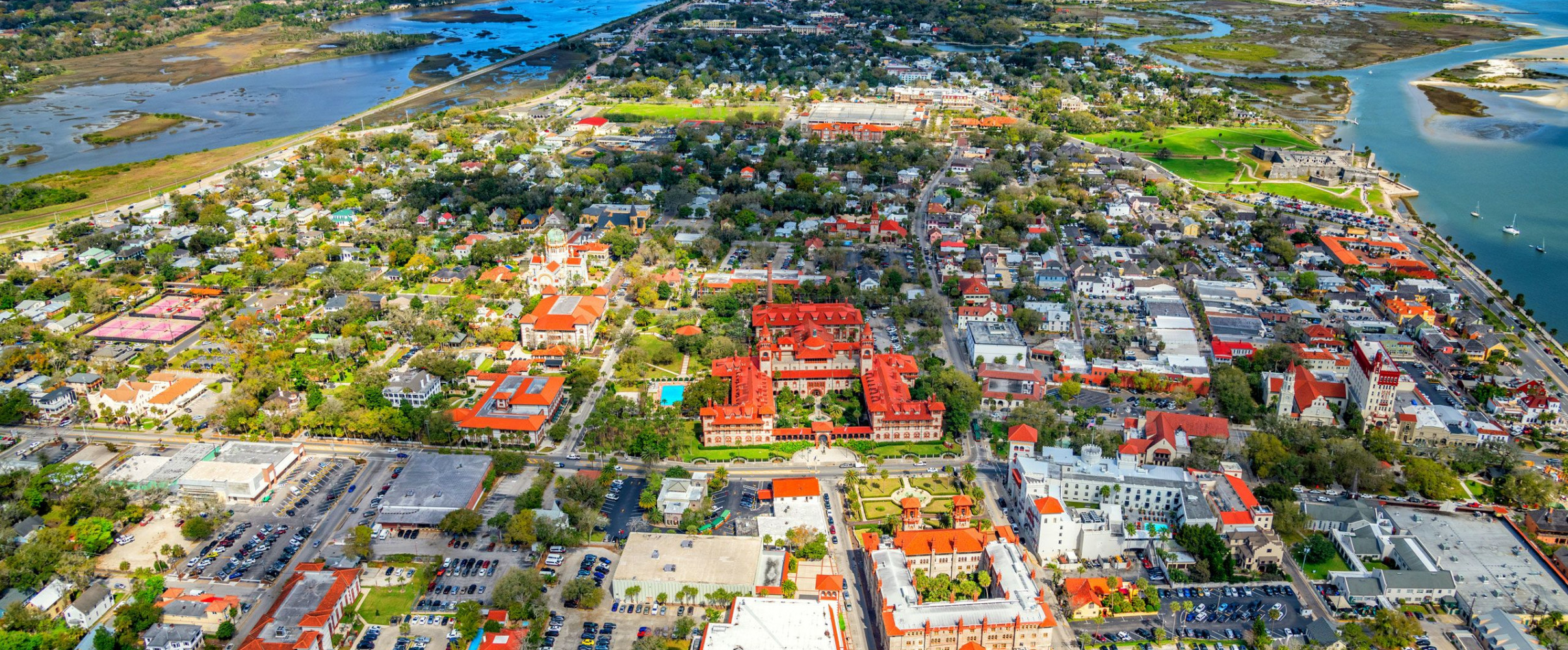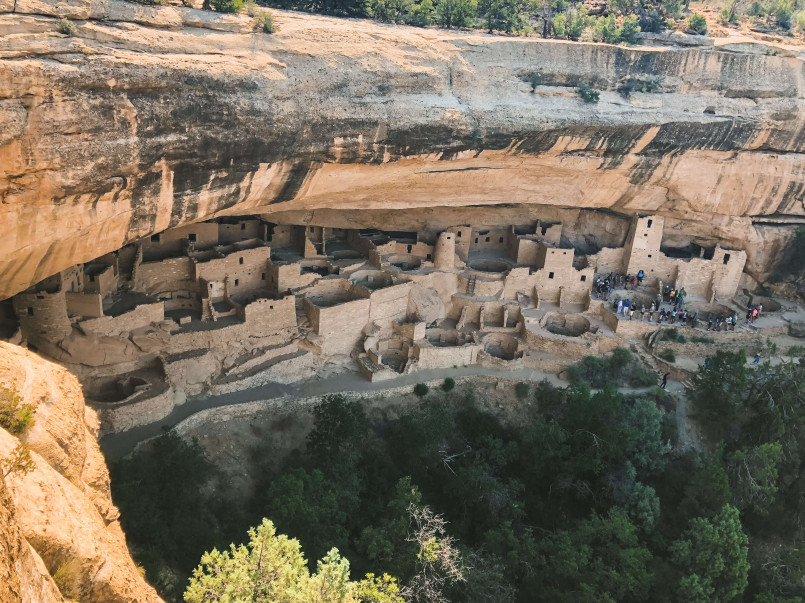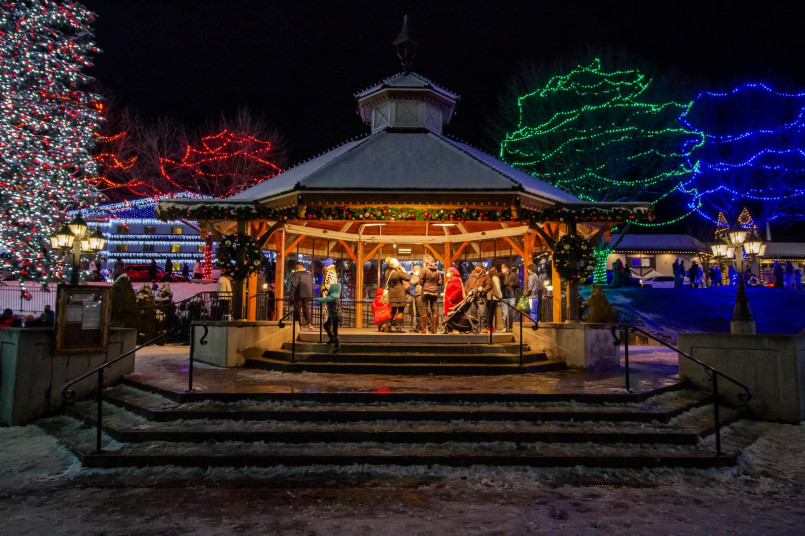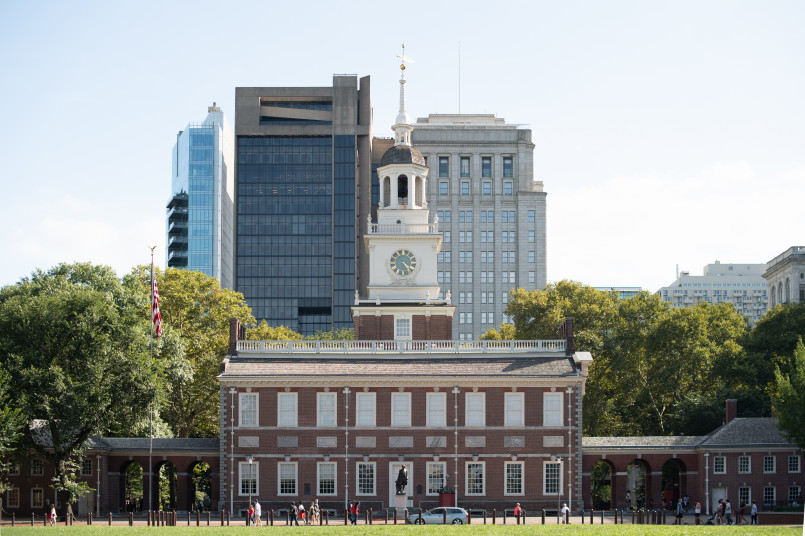America's oldest cities offer a fascinating window into the nation's beginnings. From Spanish colonial settlements to Dutch trading posts and English harbors, these historic urban centers preserve centuries of American heritage through their architecture, cultural institutions, and living traditions.
America may be young compared to many Old World nations, but its oldest cities tell fascinating stories of colonial ambition, cultural exchange, and the birth of a nation. These historic urban centers-some dating back over 450 years-offer visitors a tangible connection to America's past through preserved architecture, living museums, and cultural traditions that have endured for centuries.
From Spanish settlements in Florida to English colonies along the Eastern Seaboard, these cities represent the diverse origins of American urban life. Let's explore the oldest cities in the United States that you can still visit today, each offering its own unique window into the nation's earliest chapters.
St. Augustine, Florida (1565)
Founded by Spanish explorer Pedro Menéndez de Avilés, St. Augustine holds the distinction of being the oldest continuously inhabited European settlement in the United States. This charming coastal city predates Jamestown by more than four decades and continues to showcase its Spanish colonial heritage.
The city's crown jewel is the Castillo de San Marcos, a 17th-century stone fortress that has withstood centuries of sieges and storms. Visitors can wander the narrow streets of the historic district, lined with Spanish Colonial and Renaissance Revival architecture, or explore the Fountain of Youth Archaeological Park, which commemorates Ponce de León's legendary quest.
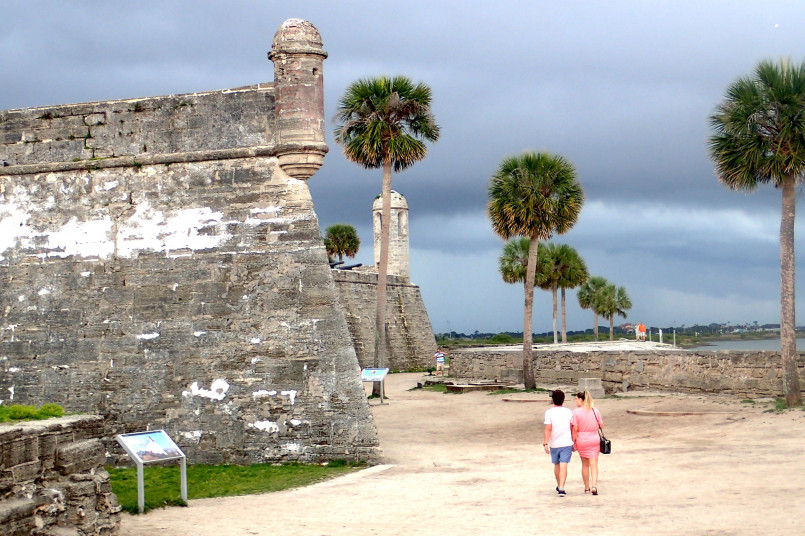
St. Augustine's Old City retains much of its colonial-era street plan, with highlights including Aviles Street (the oldest street in America) and the ornate Flagler College, housed in the former Hotel Ponce de León built by railroad magnate Henry Flagler in 1888.
Santa Fe, New Mexico (1607)
Founded as a Spanish colony the same year as Jamestown, Santa Fe stands as the oldest state capital in the United States. Its distinctive adobe architecture and blend of Native American, Spanish, and Mexican influences create a cultural tapestry unlike any other American city.
The heart of Santa Fe is its historic Plaza, where the Palace of the Governors-the oldest continuously used public building in the United States-has stood since 1610. The city's narrow, winding streets reveal centuries-old churches like the San Miguel Chapel (built around 1610) and the Loretto Chapel with its mysterious spiral staircase.
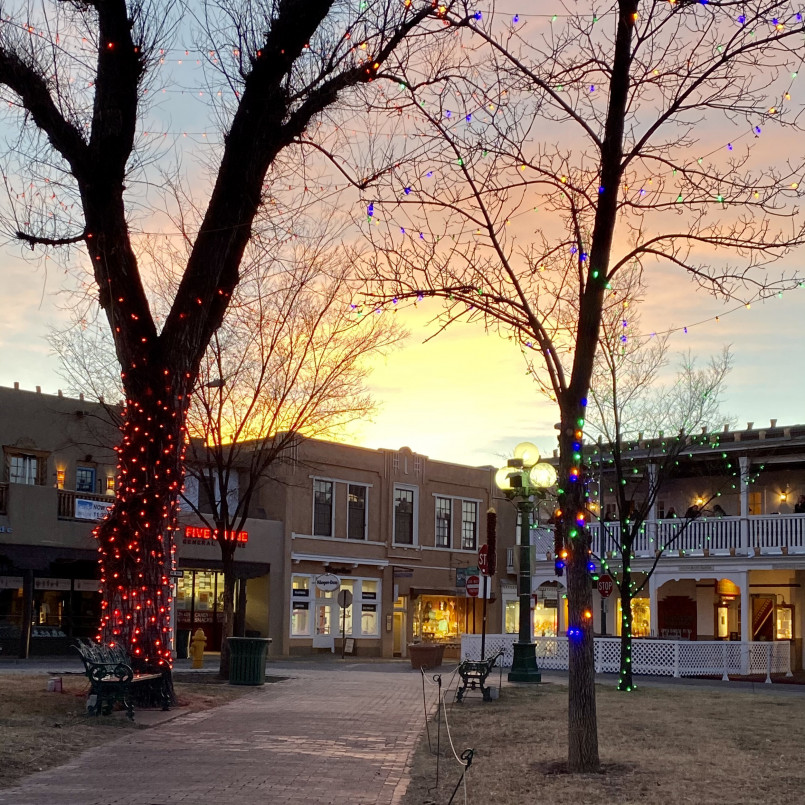
Santa Fe's commitment to preserving its architectural heritage through strict building codes has maintained its distinct character, earning it the nickname "The City Different." Its vibrant arts scene, including more than 250 galleries, builds upon centuries of cultural exchange between indigenous and European traditions.
Jamestown, Virginia (1607)
As England's first permanent settlement in North America, Jamestown marks the beginning of British America. Though no longer an inhabited city, Historic Jamestowne and the adjacent Jamestown Settlement living history museum offer immersive experiences into this pivotal chapter of American history.
Archaeological excavations at the original James Fort site have uncovered over two million artifacts, including evidence of the "starving time" winter of 1609-1610 and remnants of the first representative government in America. Visitors can walk in the footsteps of Pocahontas, John Smith, and the early colonists whose struggles and perseverance laid the groundwork for what would become the United States.
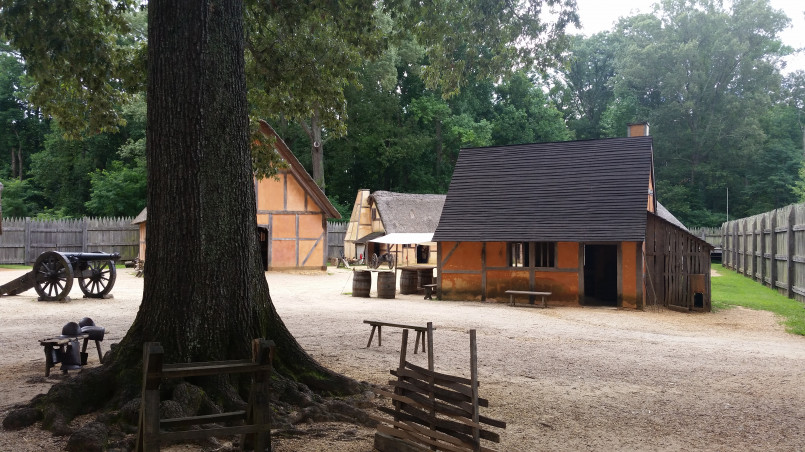
The Jamestown Settlement features full-scale replicas of the three ships that brought the original colonists, a re-created fort, and a Powhatan village that illustrates the indigenous culture the English encountered upon arrival.
Plymouth, Massachusetts (1620)
The landing site of the Mayflower and its Pilgrim passengers, Plymouth holds an iconic place in American origin stories. While not among the very first European settlements in North America, its influence on American cultural identity has been profound.
Plymouth Rock, though modest in size, symbolizes the Pilgrims' arrival, while Plimoth Patuxet Museums (formerly Plimoth Plantation) offers living history experiences that recreate the 17th-century English village and Wampanoag homesite. The Mayflower II, a full-scale reproduction of the original ship, provides insight into the harrowing 66-day journey the Pilgrims endured.
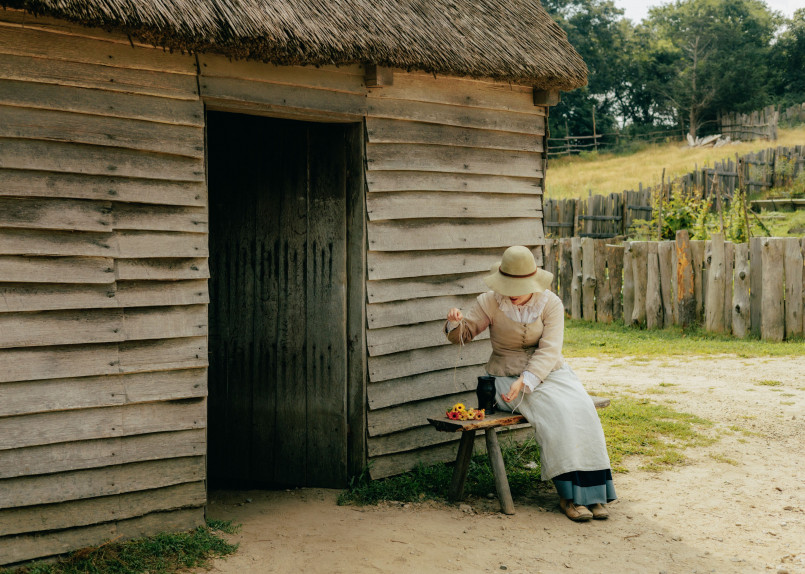
The town's historic district includes Burial Hill, where many original Pilgrims were laid to rest, and the 1749 Courthouse, now part of the Pilgrim Hall Museum-America's oldest continuously operating public museum, housing the most comprehensive collection of Pilgrim artifacts.
Albany, New York (1624)
Originally established as Fort Orange by Dutch colonists, Albany became a crucial fur trading post before transitioning to English control in 1664. As the capital of New York State since 1797, it blends colonial history with political significance.
The city's Dutch heritage is evident in the Schuyler Mansion, home of Revolutionary War general and Alexander Hamilton's father-in-law Philip Schuyler, and the Historic Cherry Hill house. The New York State Capitol, a magnificent 19th-century structure that took 32 years to complete, showcases architectural grandeur through its Romanesque and Renaissance Revival design.
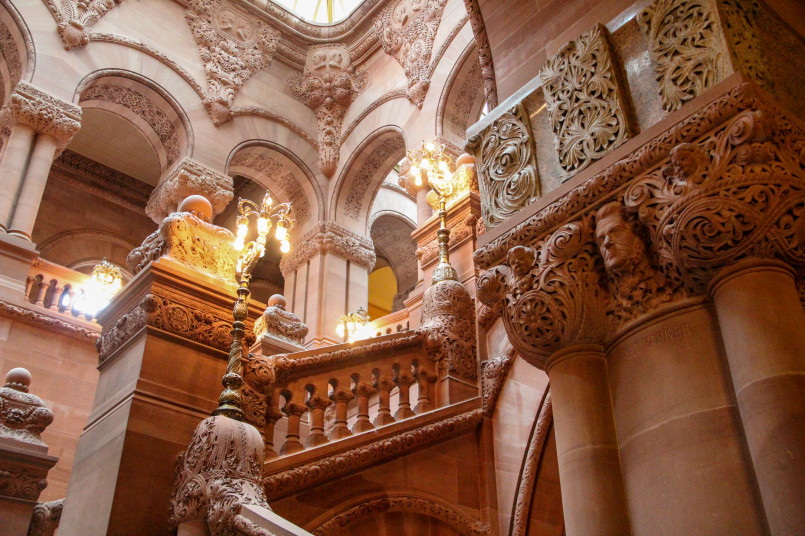
Modern Albany is home to the fascinating New York State Museum and the Empire State Plaza, a striking modernist complex housing government offices. Yet throughout the city, visitors can find colonial-era street patterns and historic neighborhoods like Center Square that preserve connections to Albany's distant past.
Newport, Rhode Island (1639)
Founded as a haven for religious freedom, Newport evolved into one of colonial America's most important ports and later, a playground for America's Gilded Age elite. This coastal gem offers visitors a remarkable architectural timeline spanning four centuries.
The city's colonial heritage shines in the meticulously preserved Historic Hill neighborhood, home to the White Horse Tavern (established 1673), America's oldest operating restaurant, and the Touro Synagogue (1763), the oldest synagogue building in the United States. The Newport Colony House (1739) stands as one of the oldest statehouses in the nation.
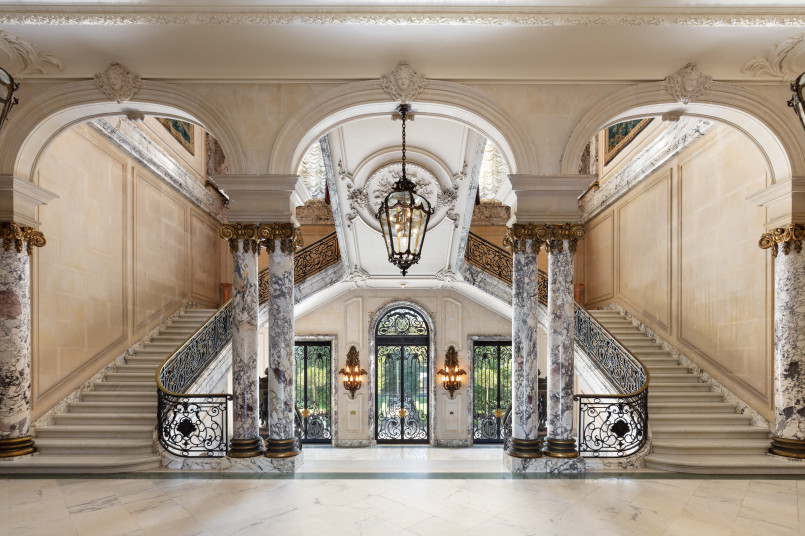
Newport's later chapters are equally compelling, with the famous Cliff Walk providing views of the lavish "summer cottages" built by industrial-era magnates like the Vanderbilts. The Breakers, The Elms, and Marble House offer glimpses into America's answer to European palaces, while the International Tennis Hall of Fame preserves the nation's oldest grass tennis courts.
Annapolis, Maryland (1649)
Known as the "Athens of America" for its cultural and architectural refinement, Annapolis boasts one of the highest concentrations of 18th-century buildings in the nation. Originally settled as Providence by Puritan exiles from Virginia, it later became a vital political center.
The Maryland State House, completed in 1779, is the oldest state capitol still in continuous legislative use and briefly served as the nation's capital. Its wooden dome, constructed without nails, remains an architectural marvel. The city's historic district features the Hammond-Harwood House, considered one of the finest examples of colonial domestic architecture in America.
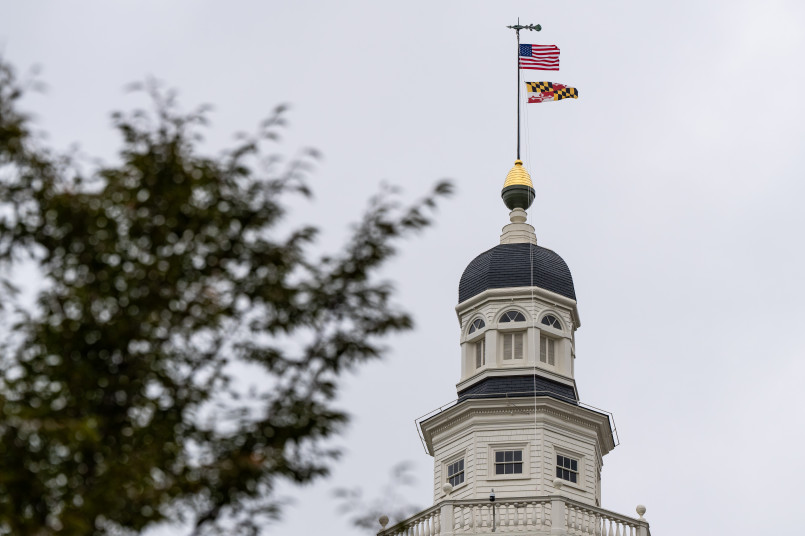
As home to the U.S. Naval Academy since 1845, Annapolis maintains a vibrant maritime tradition. Visitors can tour the Academy grounds, watch midshipmen drill, or sail the Chesapeake Bay from the city's well-preserved historic harbor, where colonial-era warehouses have been converted into restaurants and shops.
Boston, Massachusetts (1630)
The "Cradle of Liberty" and the largest of New England's early settlements, Boston's revolutionary history is woven into its very streets. Founded by Puritan colonists led by John Winthrop, the city quickly became colonial America's intellectual and commercial hub.
The Freedom Trail, a 2.5-mile red-brick path, connects 16 historically significant sites including the Old North Church, Paul Revere's House, and the Old State House-the site of the Boston Massacre. Boston Common, established in 1634, holds the distinction of being America's oldest public park.
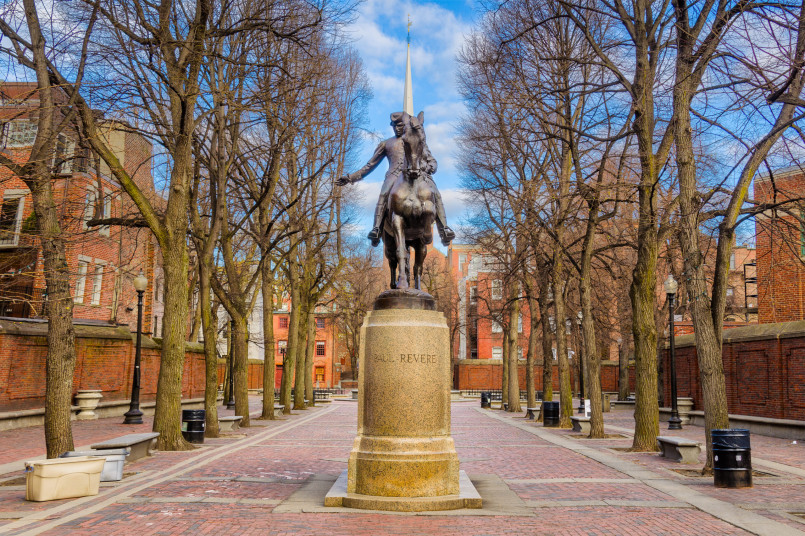
Beacon Hill's brick row houses and gas lamps preserve the atmosphere of 19th-century Boston, while the Granary Burying Ground serves as the final resting place for revolutionary figures including John Hancock, Samuel Adams, and Paul Revere. The city's academic traditions, established with the founding of Harvard College in neighboring Cambridge in 1636, continue through its world-renowned universities.
Philadelphia, Pennsylvania (1682)
William Penn's "Holy Experiment" grew from a Quaker settlement into the birthplace of American independence. Philadelphia's carefully planned grid layout, innovative for its time, still forms the backbone of Center City, while its historic sites tell the story of a nation's founding.
Independence Hall, where both the Declaration of Independence and U.S. Constitution were debated and signed, stands as the centerpiece of Independence National Historical Park. Nearby, the Liberty Bell, Congress Hall, and the First Bank of the United States preserve tangible connections to the nation's earliest days.
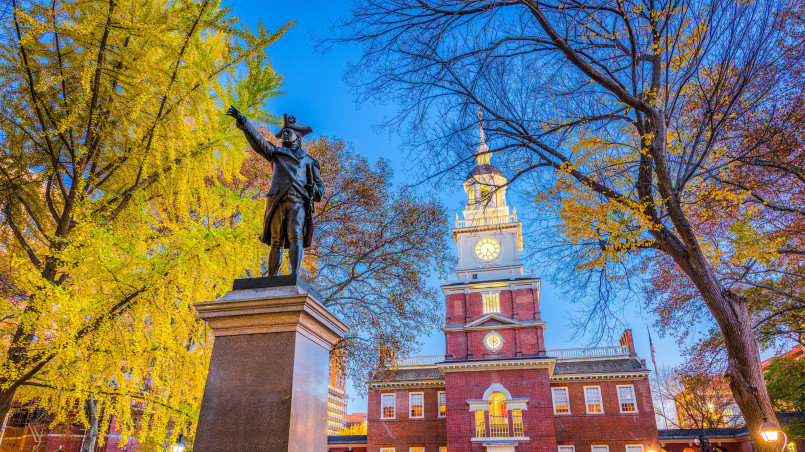
Elfreth's Alley, the nation's oldest continuously inhabited residential street, dates to 1702, while Christ Church (1744) counted Benjamin Franklin and George Washington among its parishioners. The city's colonial heritage extends to institutions like the Pennsylvania Hospital (America's first hospital, founded 1751) and Bartram's Garden (the oldest surviving botanical garden in North America).
New Orleans, Louisiana (1718)
Founded by French colonists and shaped by Spanish rule before becoming part of the United States through the Louisiana Purchase, New Orleans offers a unique blend of European, African, and Caribbean influences unlike any other American city.
The French Quarter (Vieux Carré), the original city established by Jean-Baptiste Le Moyne de Bienville, features distinctive architecture with wrought-iron balconies, hidden courtyards, and buildings dating back to the late 18th century when the city was rebuilt after fires destroyed much of the original French construction.
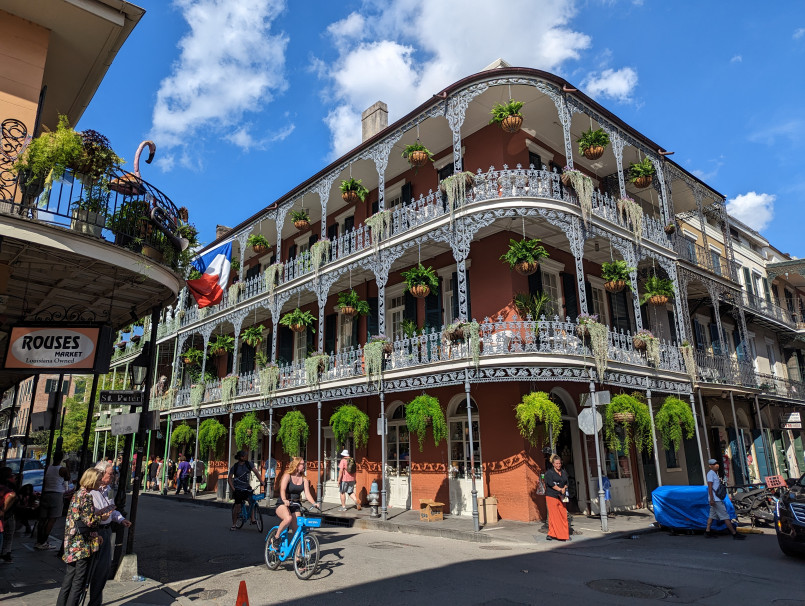
St. Louis Cathedral, facing Jackson Square, stands as the oldest continuously active cathedral in the United States, while nearby neighborhoods like Tremé (one of America's oldest African American neighborhoods) and the Garden District showcase the city's evolving cultural landscape. The above-ground tombs of St. Louis Cemetery No. 1, necessitated by the city's high water table, create a distinctive "city of the dead" dating to 1789.
Savannah, Georgia (1733)
Planned by General James Oglethorpe with a distinctive grid of streets and squares, Savannah represents one of America's first planned cities. Its innovative design, which incorporated 24 public squares surrounded by homes and civic buildings, has made the Savannah Historic District one of the largest National Historic Landmark Districts in the United States.
The city's preservation movement, pioneered in the 1950s, has maintained an exceptional collection of antebellum architecture. Visitors can explore Federal, Georgian, Gothic Revival, and Greek Revival buildings, including the Owens-Thomas House, the Mercer-Williams House, and the birthplace of Juliette Gordon Low, founder of the Girl Scouts.
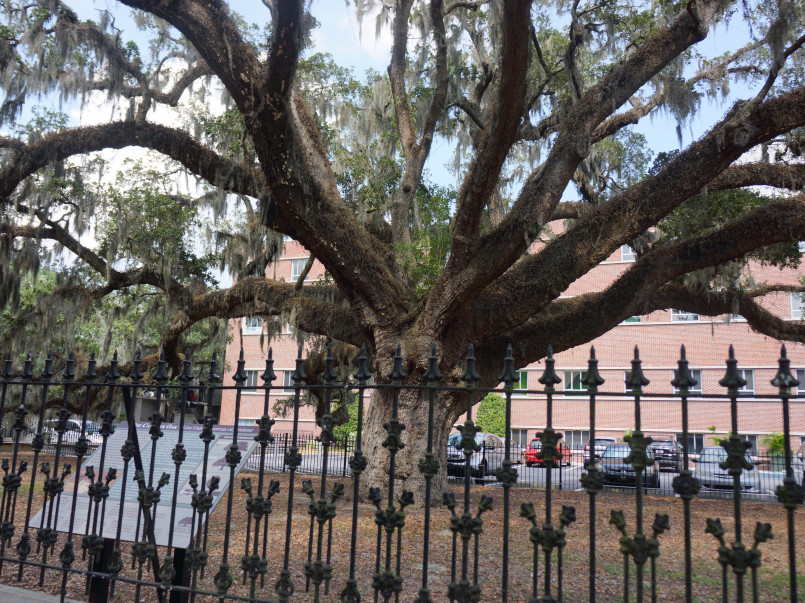
Forsyth Park, with its iconic fountain, and the oak-lined streets draped with Spanish moss create Savannah's distinctive atmosphere. The city's waterfront along the Savannah River, once lined with cotton warehouses, now serves as a vibrant district while maintaining connections to the city's maritime past.
San Antonio, Texas (1718)
Established as a Spanish mission and colonial outpost, San Antonio grew around the Alamo (Mission San Antonio de Valero) and four other Spanish missions that now comprise a UNESCO World Heritage Site. The city's Spanish colonial heritage remains visible throughout its historic core.
The Alamo, site of the famous 1836 battle during the Texas Revolution, stands as Texas' most visited historic landmark. The nearby San Fernando Cathedral, founded in 1731, is one of the oldest cathedrals in the United States and served as the burial site for heroes of the Alamo.
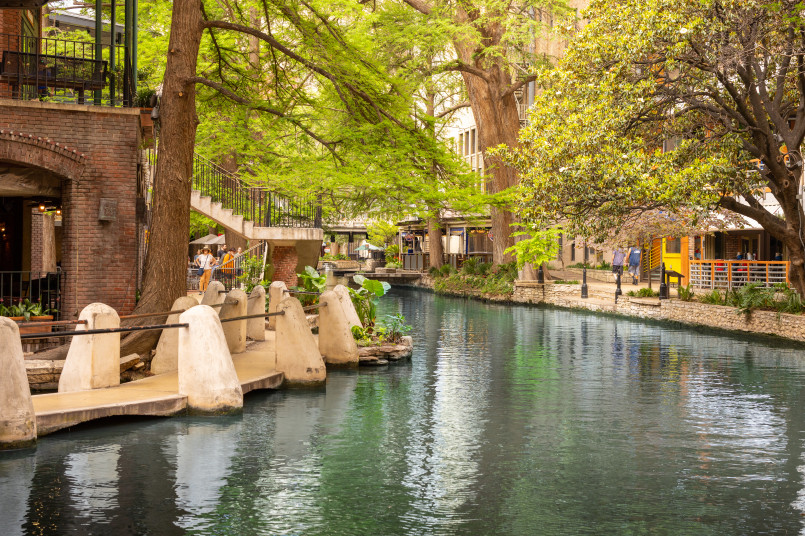
The River Walk (Paseo del Río), though a 20th-century development, follows the natural path of the San Antonio River through downtown, connecting historic sites. La Villita Historic Arts Village preserves one of the city's oldest neighborhoods, with buildings dating to the early 1800s now housing artisans and restaurants.
Charleston, South Carolina (1670)
Originally established as Charles Towne by English colonists, Charleston developed into one of colonial America's wealthiest cities through trade, rice cultivation, and the tragic legacy of the slave trade. Today, it's renowned for having one of the most well-preserved historic districts in America.
The city's distinctive architecture includes the Charleston single house-a narrow residence with a side porch (piazza) designed to catch sea breezes-and grand antebellum mansions along The Battery. Rainbow Row, a series of pastel-colored Georgian townhouses on East Bay Street, dates to the 1740s and ranks among America's most photographed streetscapes.
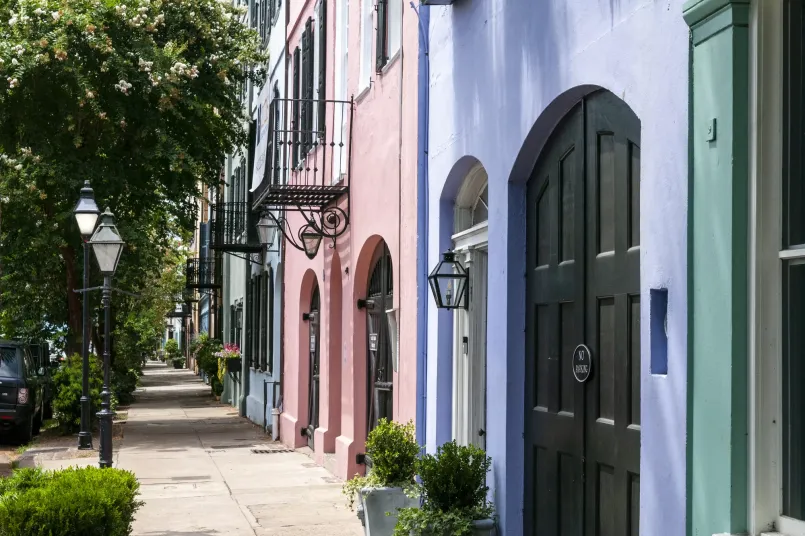
Historic sites include the Old Exchange and Provost Dungeon, where the Declaration of Independence was first read to South Carolinians, and the Powder Magazine, the oldest public building in the Carolinas (1713). The city's historic houses of worship, including St. Michael's Episcopal Church (1761) and the Kahal Kadosh Beth Elohim Synagogue (1840), one of the oldest synagogues in the United States, reflect Charleston's religious diversity.
Frequently Asked Questions About 13 Oldest Cities in the USA You Can Actually Visit Today
What is the oldest continuously inhabited city in the United States?
St. Augustine, Florida, founded in 1565 by Spanish explorer Pedro Menéndez de Avilés, holds the title of oldest continuously inhabited European-established city in the United States. It predates the next oldest European settlements (Jamestown and Santa Fe) by more than 40 years.
Are there any Native American settlements older than European cities in the United States?
Yes, many Native American settlements predate European cities by centuries or millennia. Acoma Pueblo (Sky City) in New Mexico has been continuously inhabited since approximately 1150 CE, making it the oldest continuously inhabited community in the United States. Other ancient indigenous settlements include Taos Pueblo (also in New Mexico) and the Hopi villages in Arizona.
Which historic American city is best for architecture enthusiasts?
Charleston, Savannah, and New Orleans offer exceptional architectural variety spanning multiple centuries and styles. Charleston is known for its antebellum mansions and distinctive single houses, Savannah for its planned squares and Federal-style homes, and New Orleans for its French, Spanish, and Creole influences. Boston and Philadelphia showcase excellent examples of Colonial, Federal, and Victorian architecture.
What's the best way to experience these historic cities?
Walking tours (guided or self-guided) are ideal for experiencing historic districts. Many cities offer specialized tours focused on architecture, culinary history, or ghost stories. Consider staying in historic inns or B&Bs within historic districts rather than modern hotels. Visit during shoulder seasons (spring and fall) for pleasant weather and fewer crowds, and allow at least 2-3 days to fully explore each city's historic attractions.
Which historic American cities are most walkable?
Boston, Charleston, Savannah, and Annapolis have compact historic districts ideal for walking. Boston's Freedom Trail connects major sites along a 2.5-mile route. Savannah's grid of squares makes orientation easy, while Charleston's historic peninsula can be thoroughly explored on foot. Santa Fe's plaza-centered layout and Philadelphia's colonial core are also very pedestrian-friendly.
Are there any lesser-known historic cities worth visiting?
Consider visiting New Castle, Delaware (1651); Portsmouth, New Hampshire (1630); St. Mary's City, Maryland (1634); or Providence, Rhode Island (1636). These smaller cities offer authentic historical experiences with fewer tourists. Castine, Maine; New Bern, North Carolina; and Nacogdoches, Texas also preserve significant colonial and early American heritage without the crowds of more famous destinations.
